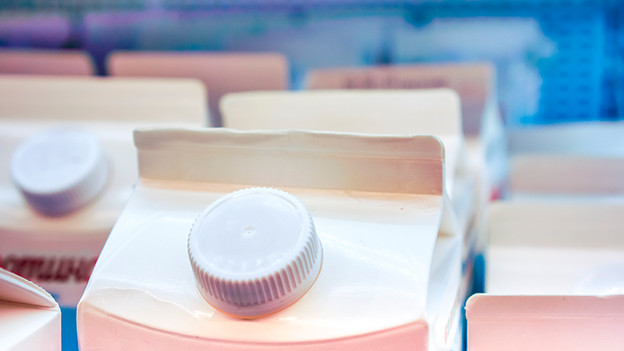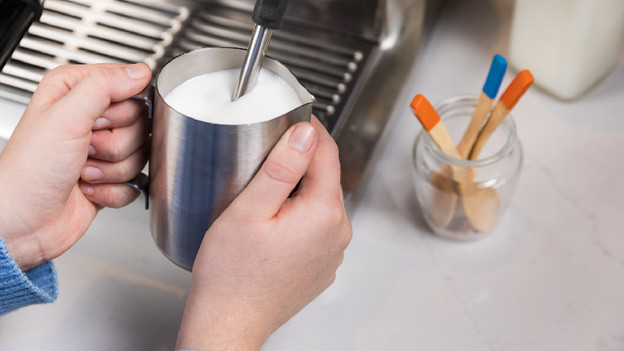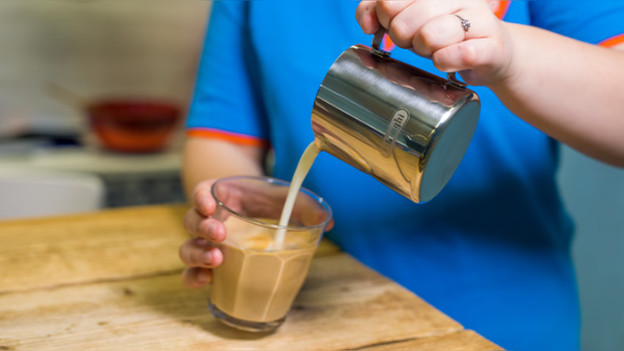
Written by Iris
Edited on
12 July 2024
·
15:12
Which milk do you use for a cappuccino?
There are various types of milk for cappuccinos. The milk you use for a good cappuccino plays an important role. It's a matter of taste, but there are a number of useful facts to keep in mind. Do you want to know what the best milk is for a cappuccino and how to create good milk foam? Read the tips on this page before you start frothing milk.
View our tips for frothing milk
We've gathered a number of tips on which milk to use to froth milk and how to best froth milk. We'll go through the following tips with you:
-
Tip 1. Use whole, long-life milk for soft and lumpy milk foam.
-
Tip 2. Make sure the milk is properly cooled before you froth the milk.
-
Tip 3. Choose plant-based milk for a sustainable and lactose-free cappuccino.
-
Tip 4. Make sure the frothed milk has a temperature of 60 to 70°C.

Tip 1: choose long-life milk
Long-life milk gives the best result when you froth milk. That's because it contains more protein compared to fresh milk. These proteins are necessary for creating the milk foam. The difference between long-life and fresh milk is the way it's processed. Fresh milk that you buy in the supermarket is heated up to 70°C, this is called pasteurization. Long-life milk is heated up to 100°C, which is slightly higher. Other than that long-life milk froths better, it has another useful advantage. You can keep long-life milk for longer.

Tip 2: use whole milk
Generally speaking, whole milk adds more flavor to the foam than skimmed milk. Proteins cause the milk to froth, not the fat. That's why skimmed milk froths better than low-fat milk or whole milk. But the fact that it froths better, doesn't mean the quality of the milk foam is better too. Good milk foam is made of tiny air bubbles. Foam that's made of skimmed milk easily becomes too airy, because large air bubbles will appear. In the supermarket, you can also find special milk for frothing. Whole milk and frothing milk don't differ much. This milk contains more sugar, so it tastes sweeter.

Tip 3: choose plant-based milk
Do you want to make a sustainable cappuccino or do you want to use lactose-free milk? You can choose a plant-based milk. With plant-based milk, you can also make tasty cappuccinos. The quality of the milk foam differs per milk type. There's oat milk, soja milk, almond milk, and coconut milk, for example. You can properly froth oat milk. With this milk, you'll be able to prepare thick and lumpy foam with a rich taste. When you froth coconut milk, the foam becomes thinner and more airy. We've tested 5 plant-based milk types to see which ones are the best for a cappuccino.

Tip 4: froth at the right temperature
The colder the milk is before you froth it, the better. That's why it's best to keep the long-life milk in the fridge, even when the carton hasn't been opened yet. Frothing milk is easiest when the milk is cooled. There's also something to say about the temperature of the milk after frothing. Ideally, you make a cappuccino with frothed milk of 60 to 70°C. When the milk is too hot, the proteins and fats break down. This will make the foam on your cappuccino disappear very quickly.
